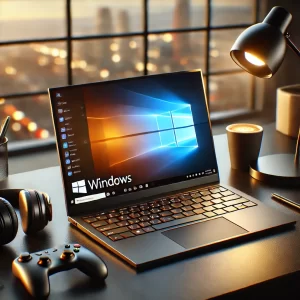 If you’re using AI to write content, you’ve probably run into the same issue everyone does: it often sounds like AI. It’s either too robotic, too polished, or just… off. Fortunately, a wave of new tools is changing that. These AI tools are specifically designed to make your content more natural, conversational, and authentic, resembling the style of a real human writer and adding the human touch for generated text.
If you’re using AI to write content, you’ve probably run into the same issue everyone does: it often sounds like AI. It’s either too robotic, too polished, or just… off. Fortunately, a wave of new tools is changing that. These AI tools are specifically designed to make your content more natural, conversational, and authentic, resembling the style of a real human writer and adding the human touch for generated text.
Here are the top five AI tools that help your content sound more human, with practical use cases and comparisons so you can choose the right one.
1. Humanizer Pro by HumanizerAI – Best for Fixing Robotic AI Text
What it does: Humanizer Pro is designed for one purpose: to make AI-generated text sound as if a human wrote it. It works by rewriting robotic, stiff, or overly “GPT-ish” language into natural, readable content. It doesn’t just rephrase—it rewires the tone, structure, and flow to sound more human.
Use Case: You’ve written a blog post with ChatGPT or Claude, but the result feels too generic. You paste it into Humanizer Pro, and within seconds, it returns a version that feels like it was written by a copywriter, not a machine.
Pros:
- Specializes in human-like rewrites (not general AI)
- Keeps your original meaning but sounds natural
- Fast and easy to use
Cons:
- Doesn’t generate content from scratch
- Works best as a final polish layer
Best for: Marketers, content creators, and ghostwriters using AI who need to “de-AI” their drafts before publishing.
2. Jasper AI – Best for Branded, Consistent Content at Scale
What it does: Jasper is a powerful AI writing tool that shines when you’re managing content across a team or multiple channels. It lets you set brand voice guidelines so everything stays consistent—and more importantly, more human.
Use Case: You run a content team and need to create dozens of product descriptions or social media posts each week. Jasper’s tone-of-voice feature helps maintain consistency across all writers and editors.
Pros:
- Brand voice customization
- Templates for different types of content
- Good team features
Cons:
- It can still sound robotic without careful tuning
- More expensive than most tools
Best suited for: Agencies, marketing teams, and businesses that create content at scale.
3. ChatGPT Custom GPTs (Tone-Focused) – Best for Building Your Own Tone Engine
What it does: ChatGPT’s custom GPTs feature allows you to create your own AI tool with specific instructions, such as “write in a warm, informal tone” or “sound like a Gen Z copywriter.” With the right setup, you can make it sound remarkably human.
Use Case: You build a custom GPT trained to write customer service replies that sound empathetic and casual. Your team uses it daily to respond more quickly without compromising tone.
Pros:
- Highly flexible
- Easy to customize tone and voice
- Great for ongoing tasks
Cons:
- Requires some trial and error to fine-tune
- Still needs human review for polish
Best for: Power users and teams who want a custom tone engine baked into their writing workflow.
4. Writer.com – Best for Enterprise-Level Tone Control
What it does: Writer is designed for large teams who need complete control over tone, grammar, and branding. You can set detailed style guides, and the AI will enforce them across everything your team writes.
Use Case: You’re in a regulated industry (like healthcare or finance), and need to ensure all written content follows strict guidelines and sounds human. The writer helps enforce this without endless rounds of editing.
Pros:
- Advanced brand voice and compliance tools
- Strong grammar and clarity suggestions
- Real-time editor for docs and apps
Cons:
- Overkill for solo creators
- Expensive for small teams
Best suited for Enterprises and regulated industries where tone, accuracy, and compliance are all crucial.
5. Grammarly’s Tone Rewriting Tool – Best for Casual Tone Adjustments
What it does: While Grammarly is known for grammar fixes, its tone rewrite feature has gotten better at adjusting voice and style. You can take a stiff sentence and instantly get a friendlier, clearer version.
Use Case: You’re writing emails or LinkedIn posts and want them to sound less formal or more persuasive. Grammarly offers quick tone adjustments without requiring manual rewriting.
Pros:
- Fast tone suggestions
- Integrates with Gmail, Docs, and other tools
- Easy for anyone to use
Cons:
- Limited flexibility compared to full AI rewrites
- Doesn’t always understand nuance
Best for: Everyday writers who want to sound less stiff in emails, posts, or business documents.
Final Thoughts: Pick the Right Tool for the Job
Each of these tools solves a slightly different problem:
- Use Humanizer Pro if you’re working with AI-generated text that requires a significant humanization overhaul.
- Choose Jasper if brand consistency and scale are your top priorities.
- Build a Custom GPT if you need flexibility in tone for a range of writing tasks.
- Choose Writer.com for high-stakes content with strict tone and style requirements.
- Try Grammarly for quick tone tweaks in everyday writing.
Human-sounding content isn’t just about better grammar—it’s about nuance, rhythm, and tone. These tools can help get you there faster, but the best results still come from combining AI with a human editor’s touch.
 Whether you have limited mobility, vision impairment, or any other disability, Windows 11 kaufen is designed to help make computing more accessible for everyone. By building in features like speech recognition, screen readers, and customizable accessibility settings, Microsoft has worked hard to ensure that
Whether you have limited mobility, vision impairment, or any other disability, Windows 11 kaufen is designed to help make computing more accessible for everyone. By building in features like speech recognition, screen readers, and customizable accessibility settings, Microsoft has worked hard to ensure that